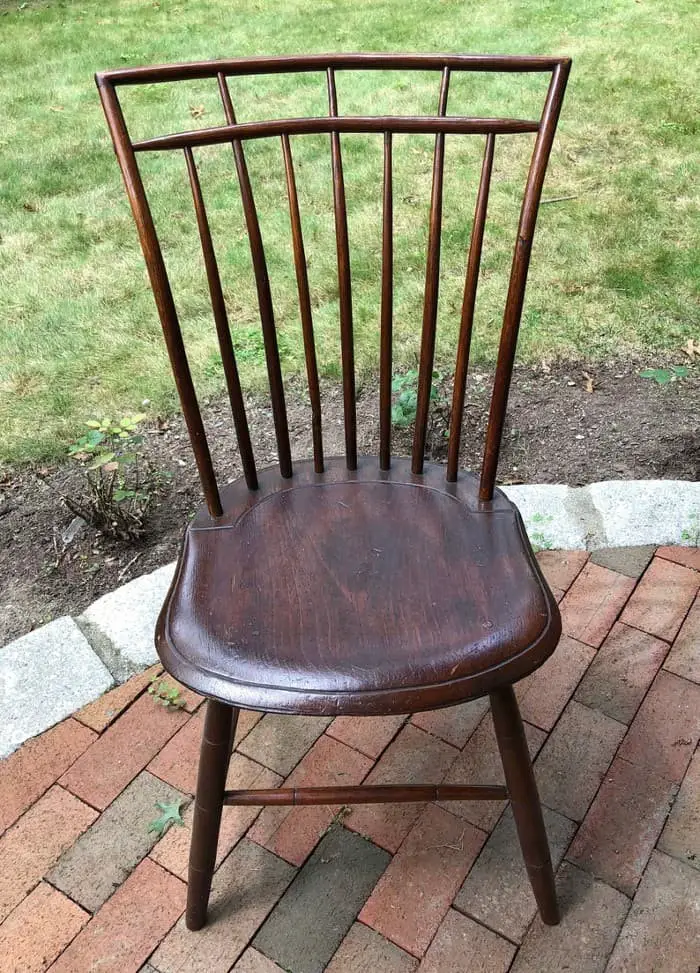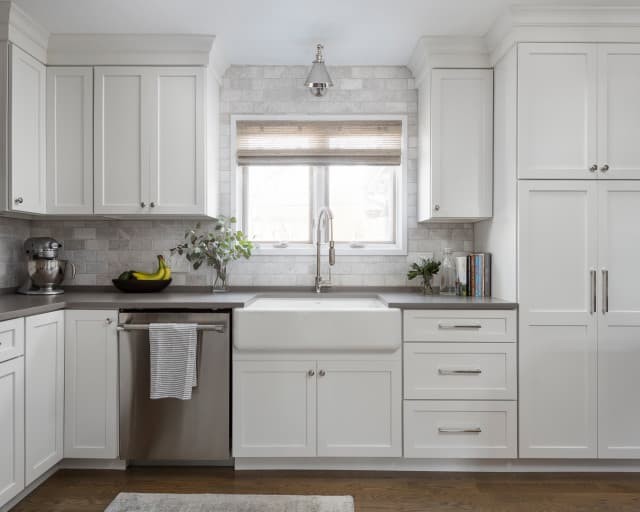Shower Tile Alternatives: 21 Eye-Catching Options For Your Bathroom
Are you tired of the same old shower tile routine? If you’re looking for a fresh and unique look, you’ve come to the right place. This article will explore 21 alternative options that can add some excitement to your shower space. From traditional to modern, these alternatives offer something for every style and preference. Let’s dive in! These innovative solutions range from acrylic panels and back-painted glass to natural stone and waterproof wallpaper.
You’ll discover a wide array of materials and designs that can transform your shower into a stunning focal point in your bathroom. So why settle for the same old tile when you can have so much more? This article will show you how to mix things up and create a truly one-of-a-kind space.
Shower Tile Alternatives
Acrylic Panels.
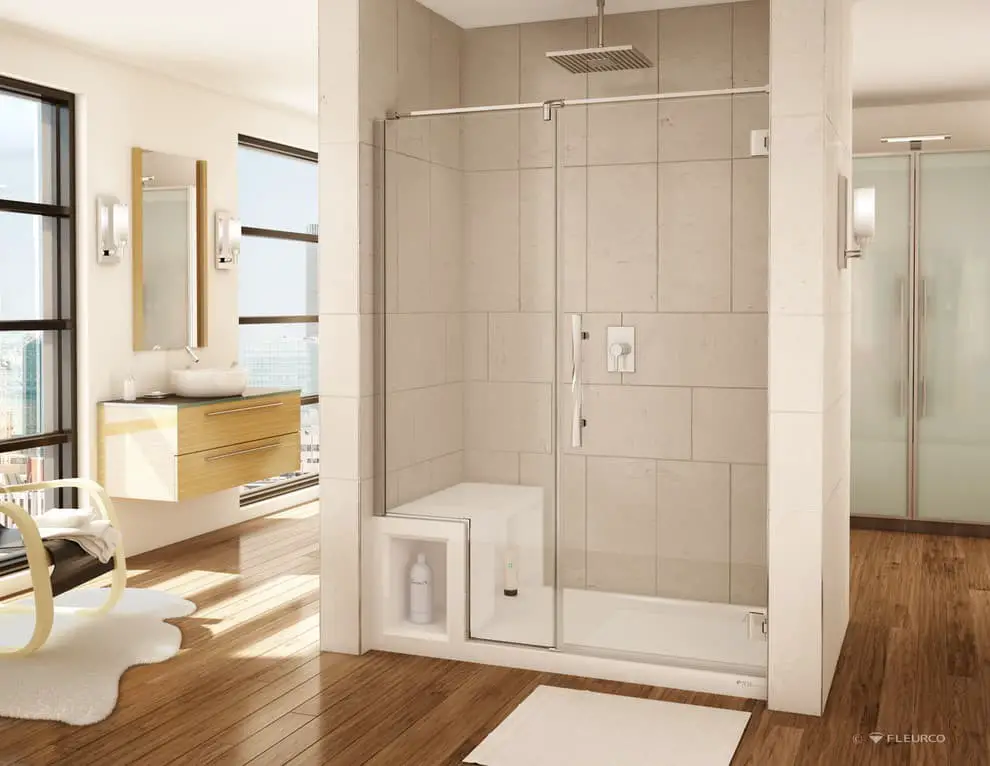
Acrylic panels offer a stylish and practical alternative to traditional shower tile. Their ease of cleaning and maintenance, combined with resistance to mold and mildew, make them an attractive option for those seeking a low-fuss bathroom solution. The versatility of acrylic panels is also noteworthy, as they come in a range of colors and styles to suit any aesthetic preference.
While acrylic panels have their advantages, it’s essential to consider the potential drawbacks before making a decision. For instance, if not properly sealed, these panels can be prone to mold and mildew growth. Furthermore, they may not be as durable as tile, requiring replacement more frequently. Additionally, acrylic panels can be a more costly option compared to traditional tile.
Back-Painted Glass Panels.
Back-painted glass panels are gaining popularity as an alternative to traditional shower tiles. Not only do they offer a sleek, modern aesthetic, but they’re also surprisingly easy to maintain and clean. While this option may come with a higher price tag compared to traditional tiles, the benefits far outweigh the drawbacks.
One major pro is that back-painted glass panels can be easily cleaned with just soap and water, eliminating the need for harsh chemicals or scrubbing away at stubborn grout lines. Another advantage is their durability, making them an excellent choice for areas prone to moisture like bathrooms. However, it’s essential to consider the potential drawbacks – specifically the cost, which may be higher than expected, and the possibility of requiring professional installation.
With proper planning and consideration, back-painted glass panels can elevate any bathroom space to new heights.
Bamboo.
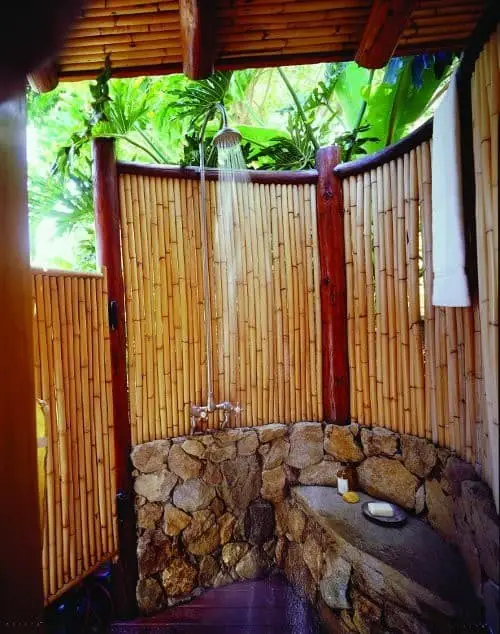
Bamboo stands out as a viable substitute for traditional tile due to its remarkable strength, durability, and eco-friendliness. Additionally, it boasts ease of maintenance, allowing for quick and effortless cleaning. Furthermore, bamboo brings a distinctive aesthetic appeal to the shower area.
While this alternative may not be without its drawbacks – it can be pricier than tile and potentially harder to source in stores – a thorough investigation of options and pricing comparisons can ultimately lead to an informed decision.
Concrete Panels.
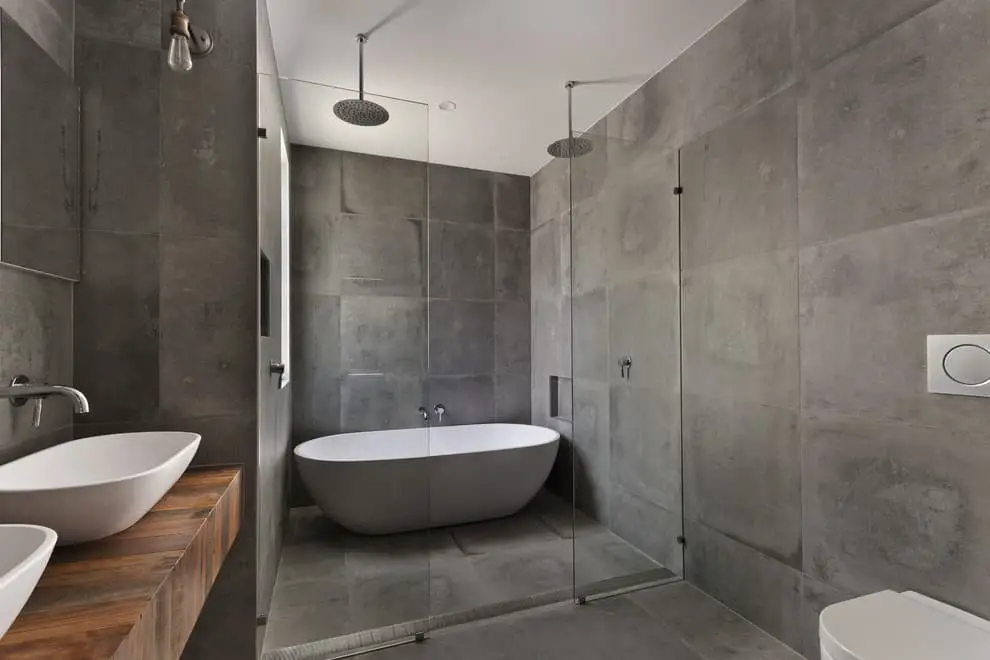
If you’re looking to revamp your shower without the hassle of traditional tiling, consider swapping out tile for concrete panels. These modern alternatives offer a streamlined appearance that can elevate any bathroom’s aesthetic. Plus, they’re more budget-friendly than tile, allowing you to achieve the updated look you desire without breaking the bank.
While concrete panels boast numerous benefits, it’s essential to be aware of some key considerations before making the switch.
For instance, as a porous material, concrete can be prone to mold and mildew if not properly sealed with a waterproofing agent. Additionally, due to their density, concrete panels can be quite heavy, necessitating a sturdy installation surface.
Furthermore, since concrete is non-porous, it can lead to condensation issues in your bathroom if proper ventilation isn’t maintained. By ensuring adequate airflow, you can mitigate this problem and enjoy the many perks of using concrete panels.
Cork.
While traditional shower tiles may have their advantages, cork is a game-changing alternative that offers a unique set of benefits. This natural material is not only easy to clean and resistant to mold and mildew, but it’s also an eco-friendly option made from renewable resources. One of the most significant pros of using cork in your shower is its soft, warm texture underfoot – a far cry from the cold, hard surface of tile.
Additionally, cork has some impressive insulation properties that can help keep your bathroom cozy during the winter months. However, it’s essential to consider the potential drawbacks: while cork is generally durable, it can be damaged by excessive water exposure, and its sustainability may not quite match that of traditional tile options.
Despite these limitations, cork remains an attractive choice for those seeking a warm, eco-friendly alternative that offers a softer, more comfortable showering experience.
Decorative aluminum.
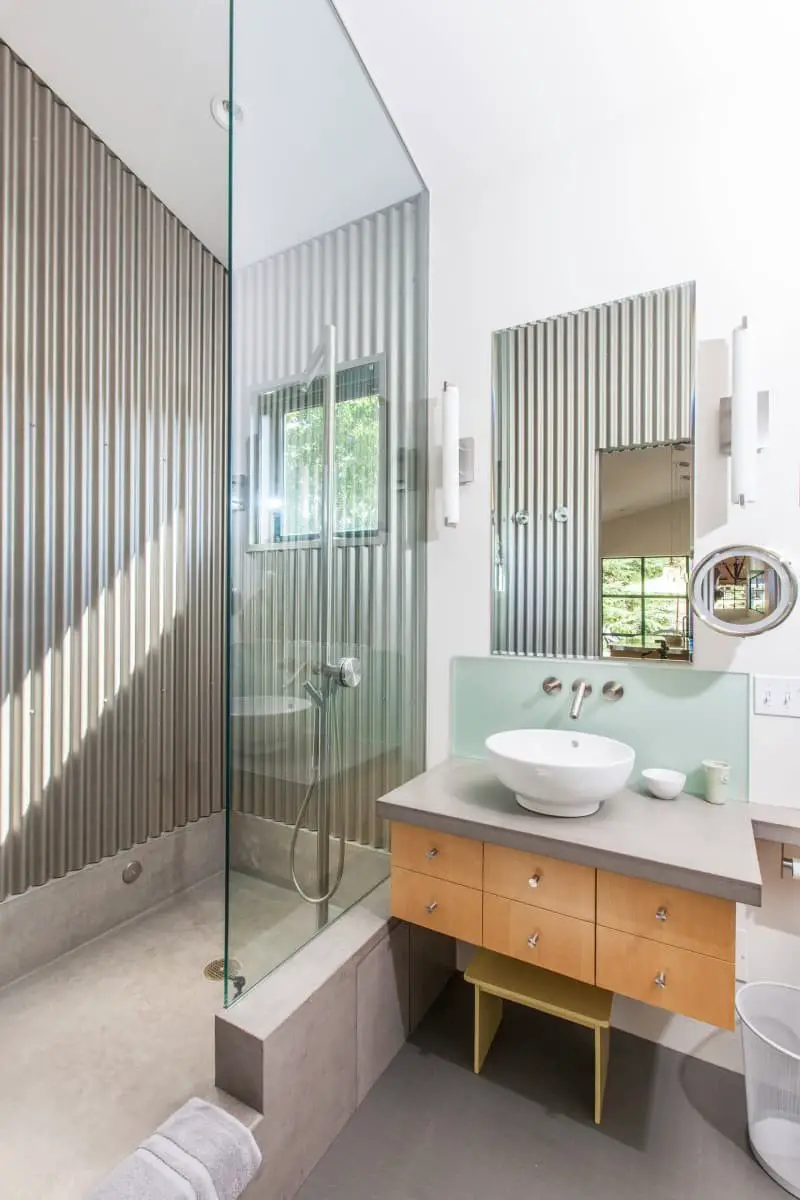
If you’re seeking a non-traditional shower tile solution, decorative aluminum is an option worth considering. This versatile material offers several advantages over traditional tiles, including ease of cleaning and maintenance. Its luxury appeal can also enhance the ambiance of your bathroom, making it a great choice for homeowners looking to boost their property’s value.
Some key benefits and drawbacks of decorative aluminum to consider are:Pros:Decorative aluminum is water-resistant, making it an ideal choice for wet areas like showers. It’s also durable and easy to clean, reducing the need for frequent maintenance. Furthermore, its heat-conductive properties can help keep your shower warm. Cons:While decorative aluminum offers several benefits, there are some drawbacks to consider as well.
For one, it can be a more expensive option compared to traditional tiles. Additionally, its strength is somewhat compromised, which means it may be prone to denting or scratching. Finally, some individuals find that the industrial look of aluminum doesn’t suit their personal taste.
Fiberglass Panels.
Fiberglass panels are an attractive option to traditional shower tiles, offering a sleek and modern aesthetic for any bathroom. Their installation process is straightforward, and their maintenance is minimal, making them a cost-effective solution. Additionally, they provide a non-porous surface that resists mold and mildew growth, which can be a significant advantage over tile.
While fiberglass panels offer several benefits, they also have some drawbacks to consider.
For instance, they may require specialized cleaners to maintain their appearance, and exposure to harsh chemicals can cause damage. Furthermore, their heat-resistance is limited, making them less suitable for steam showers. Nonetheless, their ease of installation, low maintenance needs, and affordability make them a viable alternative to traditional shower tiles.
Glass tiles.
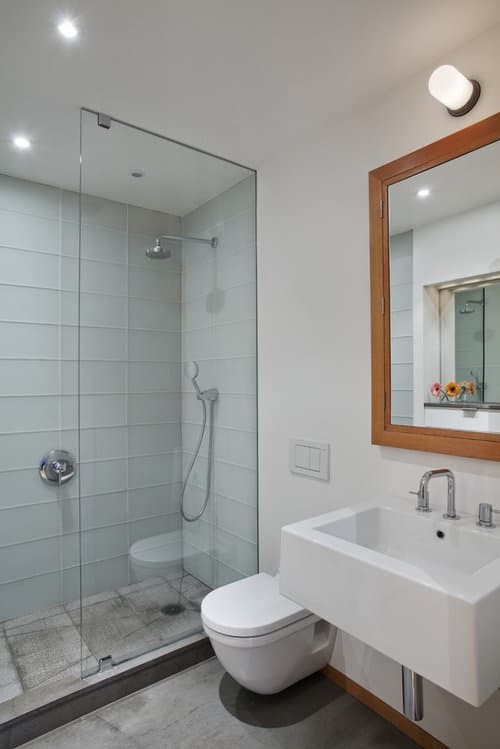
While glass tiles boast a mesmerizing array of colors and unparalleled durability compared to ceramic tiles, their higher price point is a significant drawback. However, when it comes to ease of cleaning and maintenance, glass tiles truly shine. Their sleek aesthetic also makes them a stylish addition to any space. On the flip side, their slippery surface can be a concern for households with young children or pets, requiring extra caution to prevent accidents.
Furthermore, the premium cost of glass tiles may not align with everyone’s budgetary constraints.
Laminated Wall Panels.
Laminated wall panels offer a practical alternative to traditional shower tiles. Their installation process is seamless, requiring minimal effort and no specialized skills. Moreover, they boast an impressive palette of colors and styles, effortlessly complementing any bathroom aesthetic. While laminated wall panels excel in several aspects, it’s essential to weigh their pros and cons before making a decision.
On the plus side, they are incredibly easy to maintain – a simple wipe with a damp cloth or sponge is all that’s needed to keep them sparkling clean. Additionally, their installation process is remarkably straightforward, eliminating the need for grout or mortar. However, laminated wall panels do have some drawbacks. One notable limitation is their relatively lower durability compared to tiles. They can be prone to scratches and chips, making them less suitable for high-traffic areas.
Furthermore, they tend to be more expensive than traditional tile options, which may pose a challenge for those on a budget.
Marble Panels.
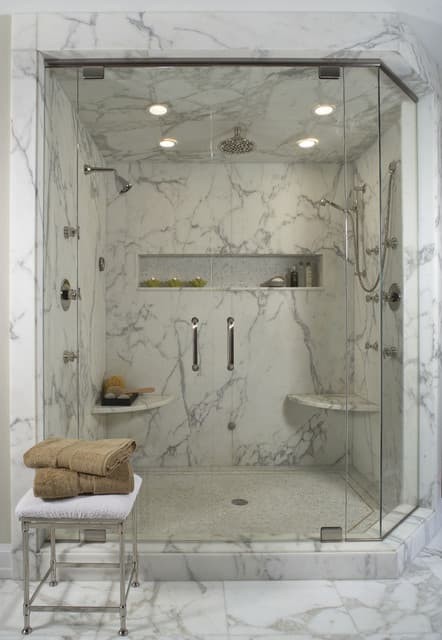
Marble panels are an attractive alternative to traditional shower tiles, offering a streamlined, contemporary aesthetic for any bathroom. Their ease of installation and maintenance make them a practical choice as well. The natural durability of marble also ensures that your shower will retain its polished appearance over time. While marble panels have their benefits, it’s essential to consider a few factors before making a decision.
One crucial aspect is the porosity of marble, which can lead to water absorption and staining if not properly maintained. Additionally, the soft nature of marble means it may scratch or chip more easily than other materials. Furthermore, marble can be a costly option, and regular sealing is necessary to preserve its beauty.
Metal panels.
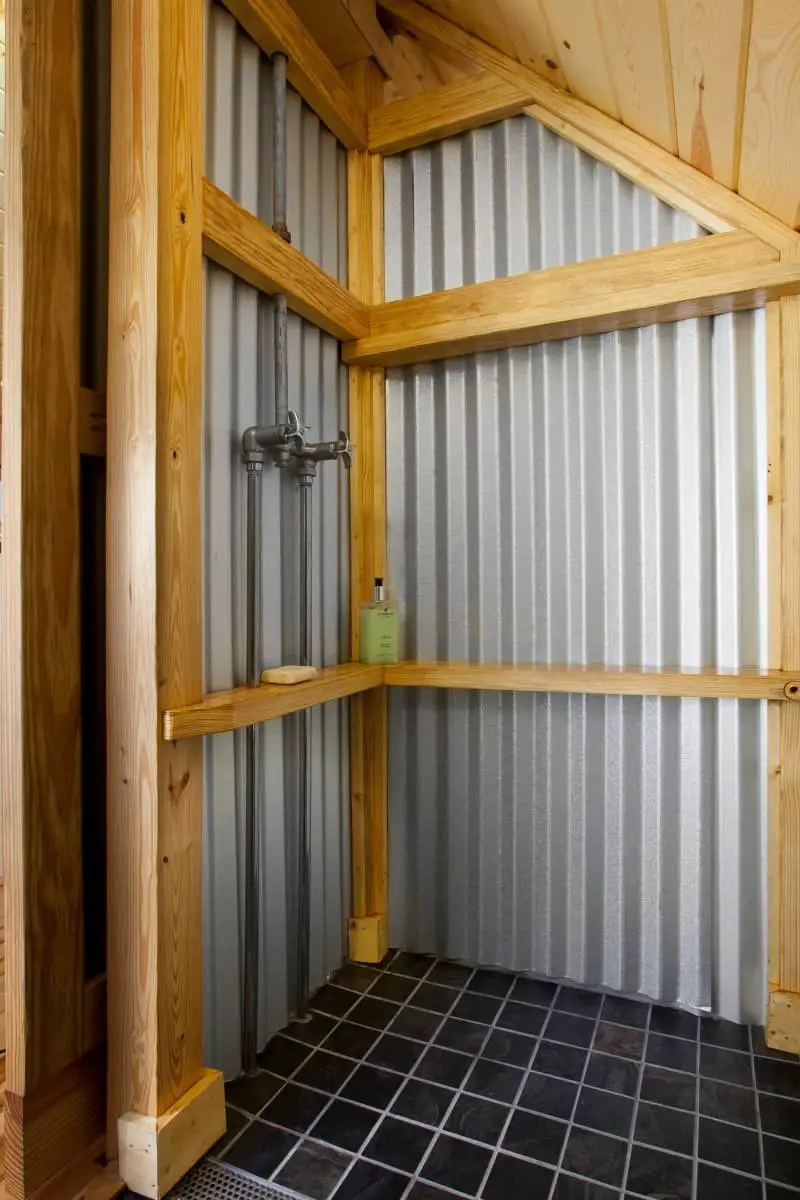
Metal panels offer a stylish and practical solution for bathroom renovations. With a range of finishes, including brushed nickel, copper, and stainless steel, they can seamlessly integrate with your desired aesthetic. Moreover, their versatility extends beyond just finish options, as they come in various shapes and sizes to suit specific needs.
Unlike traditional shower tile, metal panels boast ease of installation and maintenance, not to mention the luxurious ambiance they bring to the bathroom. If you’re seeking a tile alternative that’s both functional and visually appealing, metal panels are certainly worth considering.
One of the key advantages of metal panels is their adaptability, allowing them to be incorporated into diverse design styles with ease.
Additionally, their durability and ease of cleaning make them a practical choice for busy bathrooms. Furthermore, their waterproof and mold-resistant properties ensure they remain a reliable option for years to come.
While metal panels offer numerous benefits, it’s essential to consider the potential drawbacks as well. For instance, high-end finishes or professional installation may result in higher costs.
Nevertheless, when carefully evaluated, metal panels can be a worthwhile investment for those seeking a low-maintenance yet high-impact bathroom renovation.
Natural stone.

When considering materials for your shower, natural stone stands out as a top choice. Its durability and ease of upkeep make it an ideal solution for a space that’s often exposed to water and humidity. Additionally, natural stone can greatly enhance the aesthetic appeal of your bathroom, increasing its value in the process. If you’re weighing alternatives to traditional tile, natural stone deserves serious consideration.
When selecting natural stone for your shower, keep the following factors in mind:
* Type: With a wide range of options available, including granite, marble, limestone, and slate, it’s essential to choose a material that resonates with your personal style and complements the overall look and feel of your bathroom.
* Cost: While natural stone may be more expensive than tile upfront, its longevity means you won’t need to replace it as frequently, ultimately saving you time and money in the long run.
* Maintenance: Natural stone does require some basic care and attention, including sealing and cleaning. However, these tasks are relatively straightforward and can be easily incorporated into your regular bathroom routine.
Natural Wood Panels.
Wooden shower panels offer a stylish and practical alternative to traditional tile installations. Not only do they bring warmth and coziness to your bathroom, but they’re also simple to clean and maintain. What’s more, this design element can cleverly incorporate storage solutions, adding functionality to the space. However, it’s essential to consider a few key factors before installing wooden shower panels:
Firstly, ensure that the panels are properly sealed to prevent water damage.
This will not only protect your bathroom from potential issues but also extend the lifespan of the wood.
Secondly, opt for a waterproof adhesive or sealant when installing the panels. This will guarantee a watertight bond between the wood and surrounding surfaces.
Finally, regular cleaning and maintenance are crucial to prevent mold and mildew buildup on the wooden panels.
By keeping these factors in mind, you’ll be able to enjoy the aesthetic and practical benefits of wooden shower panels for years to come.
Paint.
When considering shower tile alternatives, painting might be an unexpected yet effective option. Not only is it more budget-friendly than tiling, but it’s also a DIY-friendly project that allows for easy color changes down the line. To ensure a successful paint job, opt for waterproof paint and primer to guarantee a durable finish. Before starting, make sure the surface is meticulously clean and dry. During the painting process, maintain good ventilation to prevent fume buildup.
Alternatively, you can add a pop of personality to your shower without committing to an entirely new look by painting just one accent wall. This subtle approach adds visual interest without overwhelming the space.
PVC Panels.
For those seeking a non-traditional solution for their shower surrounds, PVC panels offer an attractive alternative to tile installations. These versatile panels are remarkably easy to install and come in a range of colors and styles, allowing homeowners to effortlessly match their bathroom’s aesthetic. Notably, they also provide significant cost savings compared to tile options.
The benefits and drawbacks of PVC panels are worth considering.
On the plus side, they prove easy to install and maintain, while their mold- and mildew-resistant properties ensure a clean and hygienic showering experience. Nevertheless, it’s essential to acknowledge that wet surfaces can be quite slippery, and some homeowners may find the durability of PVC panels inferior to that of tile.
Rubber Leather.
Crafted from repurposed rubber tires and salvaged leather scraps, this innovative material offers a sustainable solution to traditional shower tiles. Its organic texture imbues bathrooms with a unique charm, while its textured appearance adds depth and character. As an eco-friendly alternative, it’s perfect for families seeking a practical and stylish addition to their bath space.
The rubber leather combination also boasts exceptional slip-resistance and ease of cleaning, making it an ideal choice for busy households.
Solid Surface Panels.
In place of traditional tile and grout, solid surface panels offer a sleek, seamless finish for your shower. Crafted from durable materials like acrylic or fiberglass, these versatile options come in a range of colors and finishes to suit any design aesthetic. One of their key benefits is ease of maintenance – they’re simple to clean and resistant to mold and mildew growth.
Whether you’re a DIY enthusiast or prefer to leave the work to a professional, installing solid surface panels is a straightforward process that can be completed with minimal fuss.
Stainless Steel Panels.
Stainless steel has become a popular choice for bathroom renovations due to its durability, ease of maintenance, and sleek aesthetic. When it comes to shower design, stainless steel panels offer versatility, allowing homeowners to create either a modern or traditional look. While stainless steel panels boast several advantages, they also come with some potential drawbacks.
On the plus side, stainless steel panels are straightforward to install, eliminating the need for grout, which can be time-consuming and messy. Moreover, their waterproof nature ensures that water damage is minimized. Additionally, their durability means they can withstand the rigors of daily use without showing signs of wear. However, there are some caveats to consider. Stainless steel panels can be a significant investment, which may put them out of reach for budget-conscious homeowners.
Furthermore, their smooth surface can be prone to fingerprints and water spots, which may require regular cleaning.
Stone Resin Panels.
When considering traditional tile as an option for your space, it’s worth exploring the benefits of stone resin panels as an alternative. Not only do they simplify the installation process, but they also boast enhanced durability and reduced maintenance requirements compared to tile. Furthermore, their versatility is a major draw, with a wide range of colors and styles available to seamlessly integrate into any décor.
Vinyl.
When it comes to choosing materials for shower tile, vinyl is an excellent option. Its durability and ease of cleaning make it a practical choice for this high-traffic area. Additionally, vinyl’s versatility shines through in its wide range of colors and styles, allowing homeowners to find the perfect match for their unique bathroom design.
Waterproof wallpaper.
For homeowners seeking a substitute for tile in their shower that’s both water-resistant and easy on the eyes, consider turning to wallpaper. The waterproof variety is readily available in an array of colors and patterns, ensuring you can find a design that harmonizes with your bathroom’s aesthetic. Furthermore, installing and maintaining this alternative is relatively straightforward, making it an excellent choice for busy individuals.
If you grow tired of the look or feel the need for a change, simply peel off the existing wallpaper and replace it with something new, hassle-free. In short, if you’re looking to trade in tile for a stylish and water-repellent solution, don’t overlook waterproof wallpaper.
What can I use instead of tile in my shower?
When it comes to adding some visual interest to your shower, you have a range of alternatives to traditional tile. For a more organic aesthetic, consider using stone or brick. These materials bring a natural charm to the space. Alternatively, glass blocks can add a sleek, modern touch. Metal panels offer an industrial vibe, while acrylic panels provide a fresh, contemporary look.
How can I waterproof my shower without tile?
To ensure your shower remains watertight, consider implementing one of three solutions: applying a waterproofing sealant to the walls, installing a waterproof liner, or opting for tile installation.
The first option involves using a sealant that creates a barrier between the water and the wall surface. This solution requires periodic reapplication, but it’s an effective way to prevent leaks. Alternatively, you can install a waterproof liner inside the shower.
This liner can be glued or taped into place, effectively blocking any water from seeping through.
For a more permanent solution, tile installation is the most reliable option. By ensuring the tile is properly sealed and grouted, you’ll prevent water from penetrating the walls. However, if budget is a concern, the waterproofing sealant or liner options remain viable choices. Both will create a watertight barrier between the water and wall surface, effectively preventing leaks.
Can you have a shower without tiles?
While tiles are a popular choice for shower enclosures, it’s possible to have a tile-free shower. There are several methods to achieve this, each with its own set of benefits and drawbacks.
One approach is to utilize a pre-made shower pan, which can be found at most home improvement stores. The advantage of this method is the relative ease of installation, while the drawback is that shower pans may not be as durable or easy to clean as tile installations.
Another option is to install a liner, another readily available product at home improvement stores. Like the shower pan, liners offer relatively straightforward installation, but their durability and cleanliness can be compromised compared to tile.
A third method involves applying a waterproof coating to the shower area. This type of solution can also be found at most home improvement stores and boasts easy installation.
However, its longevity and cleanability may not match that of a traditional tile-based shower.
Conclusion
By choosing one of these three innovative shower tile alternatives, you can achieve a stylish look without breaking the bank. To find the perfect solution for your bathroom, simply apply your creativity and do some research. The process is fun and rewarding, allowing you to create a space that truly reflects your personal style. As you explore new options, remember that it’s okay to think outside the box and try something unconventional.
After all, your bathroom should be a reflection of your unique taste. We appreciate you taking the time to read this article and hope you’ll share your favorite shower tile alternatives with us in the comments below. If you found our suggestions helpful, please don’t hesitate to spread the word by sharing this post with your friends and family.
Related Posts
When it comes to bathroom remodeling, safety is a top priority, especially when catering to elderly individuals. One crucial aspect that requires attention is walk-in tubs, which require specific features to ensure a secure and comfortable experience. Notably, certain design elements can significantly enhance the overall safety of these tubs. For instance, the incorporation of grab bars, slip-resistant surfaces, and adequate lighting can greatly reduce the risk of accidents.
Additionally, designing a bathroom that promotes accessibility and ease of use is vital for seniors. In this context, it’s essential to consider factors such as walkways, seating areas, and proper storage solutions. Furthermore, exploring innovative design options that prioritize both luxury and functionality can lead to remarkable results.

